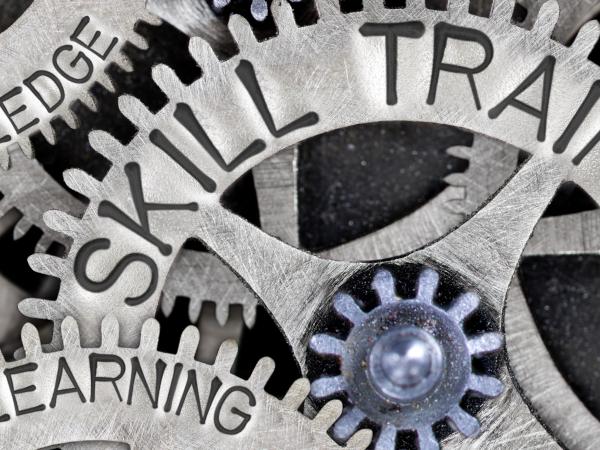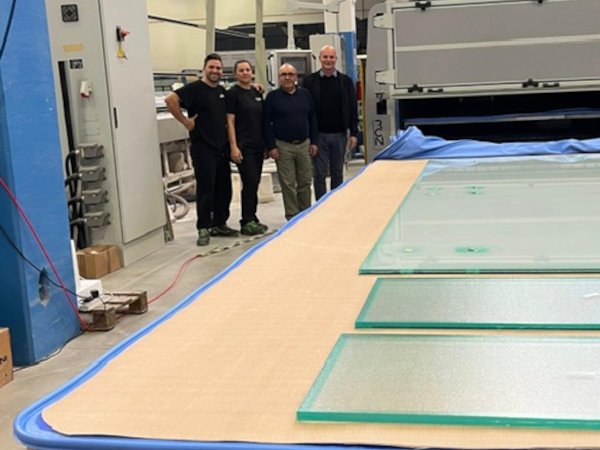
Date: 5 April 2024
Today we step back into the realm of AI and its influence on the flat glass, window, and door industry. We’ll dissect the interdependent relationship between technology, software, and AI. The deepening impact of AI advancements could widen the rift between companies willing to embrace technology and those resisting the change. So, let’s take this opportunity to educate ourselves on the advancements and those impacts as we navigate our companies through 2024 and beyond.
In this blog series, we embark on an opportunity to enlighten you about the vast potential of AI, encouraging you to take a positive perspective on change, and empowering you to initiate small-scale transformations. Join us as we dive into our second area of focus, safety!
Safety
Safety is of utmost importance no matter where your employees work, the factory floor or on the job site. When thinking about repetitive tasks, for example, AI can control robots that execute repetitive tasks. By employing AI and robots to completely repetitive tasks (as discussed above), you can hopefully decrease the instances of injury.
You can train AI to understand and recognize any safety violations based on your parameters. By training AI to spot and register violations, you can automatically prioritize, rank, and prescribe corrective solutions/training.
Along with corrective training, AI can help mitigate your risks when analyzing safety concerns. By mitigating risks, you can improve your company’s productivity.
Keeping your employees safe is of utmost concern for any business owner. By employing AI, you have the opportunity to proactively address concerns. Additionally, you can make sure all employees are trained the same way, so there is no difference between employees.
Labor
The labor shortage has been discussed at nauseum for years in our industry. Unfortunately, it is a clear and present challenge for the construction industry as a whole and in the flat glass, window, and door industry, in particular. The average turnover rate in our industry is higher than other industries. How can we start mitigating this shortage and employing AI?
Let’s examine AI-powered robots, as discussed above. Managers can employ AI-powered robots to complete repetitive tasks, which frees up workers for higher-skilled tasks, allows managers to address bottlenecks and shift workers accordingly, etc. AI-powered computers can also train all employees on safety and ensure they stay up-to-date. Additionally, as AI scans the internet for potential concerns, these can be brought to managements attention and adequate training prescribed.
AI-powered software can also work with order entry personnel to automate certain processes, such as entering orders, confirming orders, tracking products, making change requests, updating customers, and notifying customers about delivery. By seamlessly tying AI and order entry software together, companies have an opportunity increase productivity. Another opportunity for AI is on the factory floor. With so many racks, lites, and stock parts throughout the facility, AI can help streamline and automate the inventory process, tracking, reordering, and keeping records updated. That can reduce potentially significant fabrication delays because a part is missing or out of stock.
All of these opportunities leads to increased efficiency within the factory, thus allowing employees to focus on other tasks and requiring potentially fewer workers to run a line. Every time we employ AI, we have the opportunity to speed up a process, inform customers quicker, invoice faster, and make your factory more productive.
Logistics
Logistics & delivery can be a pain point for many companies. Every year you lose racks, traffic slows deliveries, drivers take routes that cost extra time, trucks are incorrectly or inefficiently loaded, etc. By employing software specific for logistics and tying that together with AI, you can help eliminate many of these challenges, while also organizing your shipments for efficiency and dollar savings all with the goal of meeting your customer’s expectations.
How can AI be a strategic partner for your business? With the use of software and AI, you can calculate the best delivery routes, arrange and optimize your racks for delivery, maximize rack placement on truck beds based on planned routes and customer stops, and utilize truck-specific software and AI data by considering weight distribution, height limits, account restrictions, road obstacles, traffic flow, etc.
AI Data
Before AI can be effectively adopted across the entire manufacturing industry and specifically in the flat glass, window, and door industry, we need to address the lack of universal data shared across our industry. Your data stays private, which is understandable. How can we address this issue, so we can develop AI products that benefit the entire industry? Can machine manufacturers collect and utilize this data to make lines and processes more efficient? That is one option, but other answers are far above my paygrade. However, by not sharing our data, we create roadblocks to developing reliable AI models for companies of all sizes. Currently, AI models will only learn from data in a silo and not across the industry. Without large amounts of data to build reliable AI models applicable for the entire industry, we run the risk of building AI models that only benefit larger corporations. At some point, someone will figure this out, which will help the entire industry improve.
Closing the Window: AI’s Prelude into Our Industry
AI is emerging as the catalyst of a paradigm shift in our society and within all industries, including the flat glass, window, and door industry. Our industry, which is traditionally resistant to rapid change, is now at a crossroads of innovation, what some are calling Industry 5.0 (people working alongside robots and smart machines that have a personal human touch). Eventually all companies will come to the proverbial fork in the road. Is now the time for software companies, equipment manufacturers, and the industry as a whole to organize details that will bring AI to “life” in our industry? AI offers solutions that can revolutionize how we approach manufacturing and installation/construction. The potential is vast – from order entry enhancements to logistics optimization. These will showcase the transformative impact of AI on safety, automation, productivity, and efficiency. The key is to understand the importance of AI as not just a tool for efficiency, but also as a strategic partner in navigating the complexities of our industry’s future and bring our true innovative potential to “life.”

Building for the Future: The Rise of AI in the Flat Glass, Window, & Door Industry (Part I)
 600450
600450









Add new comment